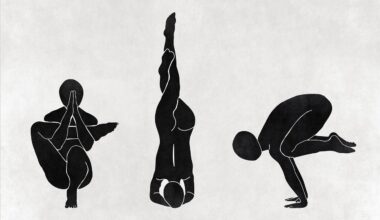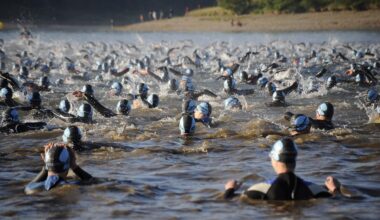Understanding the Limits of Popular Self-Defense Myths
Self-defense training is often clouded by popular myths that can mislead individuals. Many believe that learning a few techniques or moves during self-defense classes guarantees safety in real-life situations. However, the reality is that self-defense is more complex. Effective self-defense relies on situational awareness and understanding the dynamics of an encounter, not merely physical techniques. One prevalent myth suggests that practicing martial arts makes you invulnerable. That’s far from the truth. While martial arts provide valuable skills, they do not ensure a guaranteed outcome against any aggressor. Knowledge and mental preparation play a crucial role too. Moreover, many individuals think that simply being trained will naturally initiate reflexes during an attack. This misconception overlooks the necessity of realistic practice. In fact, muscle memory can take time and repetition. Additionally, there’s a belief that self-defense tools, like pepper spray, are foolproof. They may not work as intended in a stressful situation. Understanding the limits of these self-defense tools is essential for anyone pursuing safety through training.
Common Myths Regarding Self-Defense
Another significant myth surrounding self-defense involves the assumption that any trained individual can easily fend off an attacker. Although training improves one’s chances, factors such as size, strength, and multiple attackers can significantly influence the outcome. Also, it is naïve to believe that self-defense scenarios will always occur in a neutral environment. In reality, situations may involve uneven terrain or unexpected obstacles, further complicating defensive tactics. Moreover, people often underestimate the psychological aspects of self-defense situations. The fight-or-flight response can impede one’s ability to remember and execute trained techniques effectively. Additionally, some believe that following self-defense classes guarantees the ability to handle dangerous situations in life. While this belief can motivate individuals to train, it can lead to overconfidence. Relying solely on physical techniques without awareness of the risks can create a false sense of security. Also, there’s a notion that self-defense is solely about combat. It’s essential to recognize the importance of de-escalation techniques, which emphasize avoiding physical confrontations when possible. This approach is often disregarded but can prove invaluable in many situations, emphasizing the need for comprehensive self-defense training.
A pervasive myth within the realm of self-defense training is the belief that any self-defense moves learned will automatically apply in emergencies. The reality is quite different; self-defense requires quick thinking and adaptability. In high-stress situations, individuals may forget specific techniques they’ve practiced. Instead, an emphasis should be placed on cultivating instincts and improving situational awareness. Another misconception is that self-defense techniques are effective regardless of the opponent’s size or physical condition. This assumption overlooks the significant role that adrenaline and fear play in real confrontations. Executing moves against someone larger or stronger can require a different approach. Moreover, many believe that self-defense training provides the ability to incapacitate an attacker instantly. While some techniques may be effective, they don’t guarantee immediate success or escape. It’s vital to understand that surviving an attack often requires ongoing situational awareness and a clear mind to react effectively. Additionally, women often believe they are at higher risk due to being outnumbered or less physically strong. However, personal safety is influenced more by awareness than merely physical prowess. Training that combines awareness and essential techniques empowers individuals to navigate various situations without relying solely on myths.
The Role of Reality in Self-Defense Training
Understanding popular self-defense myths also includes realizing the prevalence of misconceptions about weapons. Many individuals assume a self-defense weapon, like a taser or firearm, will provide absolute protection. This belief can provoke negligence regarding self-defense training altogether. Instead, one must train consistently and confront how to respond effectively in various scenarios. Being proficient with an accessory requires rigorous training, similar to physical self-defense techniques. Furthermore, people often think that simply carrying a self-defense weapon makes them immune from harm. This mentality can lead to disastrous consequences, particularly if the weapon is not used appropriately or becomes misused. Proper training is crucial for maximizing effectiveness; for example, some tools require a calm environment for optimal performance. Additionally, there’s a widespread belief that self-defense techniques will “kick in” imperceptibly during highly stressful situations. Sadly, in most cases, stress can make trained responses difficult to access. Often, without continuous practice, skills can fade over time. Therefore, realistic self-defense training emphasizes the need to balance knowledge, physical skills, and mental preparedness for the best outcomes.
Another damaging myth is that self-defense training is solely for people who constantly feel threatened. In truth, everyone can benefit from self-defense education. The skills learned not only empower individuals but also help them cultivate a self-assured mindset, promoting safety in daily life. Additionally, the notion that self-defense is only necessary for women is misplaced. Self-defense training is essential for all genders, increasing personal security. Moreover, there’s a belief that self-defense classes are exclusively focused on physical confrontation. Conversely, they can include valuable lessons on how to avoid confrontations altogether. Understanding conflict resolution and de-escalation tactics is equally crucial. Furthermore, some individuals believe that specific self-defense programs can instantly teach them everything needed for survival. This notion diminishes the long-term commitment required for effective training, which is often a continuous journey. It’s vital to acknowledge this journey as one can gain from ongoing education and skill refinement. Equally, self-defense myths can potentially lead individuals to dismiss the true importance of maintaining a preventive mindset. Self-defense training is meant to enhance awareness and equips individuals with tools to protect themselves while learning to avoid violence when possible.
Practical Applications of Self-Defense Awareness
Ultimately, recognizing and debunking self-defense myths allows individuals to approach specific training more realistically. It’s essential to acknowledge that anyone can become a target, regardless of experience or level of fitness. Therefore, self-defense awareness can be essential for preventing potential situations. Preparation should encompass more than simply physical abilities; mental readiness plays a substantial role. Understanding various self-defense styles and their limitations helps learners identify what works best for them. Furthermore, being aware of one’s surroundings and environmental factors is crucial. Training should integrate these fundamental aspects, ensuring individuals know their strengths and limitations. Also, enhancing resilience requires familiarity with potential threats, allowing individuals to implement strategic responses. This awareness extends to recognizing how non-verbal cues can influence situations. Learning about body language and how it affects interactions can foster safety and minimize confrontations. Additionally, promoting self-defense does not mean villainizing others; it’s about empowerment and building confidence. This approach helps individuals understand the importance of creating a supportive community focused on personal security. By fostering awareness through education and open discussions, communities can develop a diligent mindset toward self-defense.
In conclusion, understanding the limits of popular self-defense myths is critical for anyone wishing to empower themselves. Self-defense training should be approached as a holistic experience encompassing physical, mental, and situational awareness aspects. Emphasizing facts and effective techniques can better prepare individuals and equip them to respond to various threats without unrealistic expectations. By dispelling common myths, individuals can develop a healthier perspective toward personal safety and self-defense techniques. Continuous and realistic practice is endorsed over just attending a one-time class, allowing skills to remain viable under pressure. When people abandon misconceptions surrounding self-defense, they open themselves up to a broader, more realistic understanding of safety significance. This understanding fosters a heightened willingness to engage in self-defense training that prepares players for everyday life scenarios. Moreover, fostering a culture of inclusivity while valuing self-defense skill education enables individuals to access diverse resources available for training. Therefore, individuals are encouraged to explore their interests in self-defense principles and understanding personal safety better. Ultimately, these efforts contribute to creating a more resilient and prepared society.


